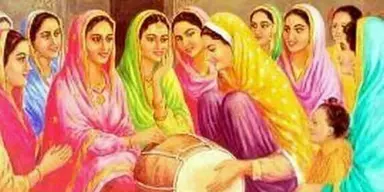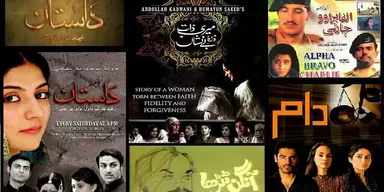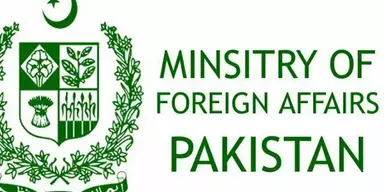ADVERTISEMENT
CONTINUE READING BELOW
We have compiled a list of top 75 Mind-blowing facts about Pakistan with sources. Here is the compiled list of unique facts about Pakistan:
ADVERTISEMENT
CONTINUE READING BELOW
- Pakistan is the world’s sixth-most populous country (source: World Bank).
- Pakistan is the only country to have been created in the name of Islam (source: “Pakistan: A Hard Country” by Anatol Lieven).
- Pakistan boasts the world’s highest ATM (Automated Teller Machine) at Khunjerab Pass, over 15,000 feet above sea level (source: National Bank of Pakistan).
- K2, the world’s second-highest mountain, is located in Pakistan (source: “K2: Life and Death on the World’s Most Dangerous Mountain” by Ed Viesturs).
- Pakistan’s national sport is field hockey, but cricket is the most popular sport (source: Pakistan Sports Board).
- Pakistan has the largest population of Irrawaddy dolphins in the world (source: World Wildlife Fund).
- The world’s largest deep sea port, Gwadar port, is in Pakistan (source: Gwadar Port Authority).
- The world’s largest contiguous irrigation system is in Pakistan (source: FAO Water Report 29, 2003).
- Pakistan is one of the world’s largest producers of hand-sewn footballs (source: FIFA World Cup 2014).
- The world’s first university, Taxila University, was established in what is now Pakistan in 700 BCE (source: UNESCO).
- Pakistan became the first Islamic country to attain nuclear power on May 28, 1998 (source: “The 1998 Nuclear Tests” by The Belfer Center for Science and International Affairs, Harvard University).
- Pakistan’s literacy rate is around 59% (source: Pakistan Bureau of Statistics, 2019).
- Lahore, the second-largest city in Pakistan, is known as the ‘City of Gardens’ due to its extensive greenery (source: “Lahore: The City of Gardens” by Yasmin Cheema).
- The Shah Faisal Mosque in Islamabad can accommodate 100,000 worshipers at a time, making it one of the largest mosques in the world (source: “Mosques Around the World” by Scala Arts Publishers Inc.).
- Pakistan is one of the world’s largest producers of chickpeas and milk (source: FAO).
- The Changa Manga forest in Pakistan is one of the largest man-made forests in the world (source: “The Plantation Forestry in Pakistan: An Analysis” by M. Zubair Anwar).
- Karachi, the largest city in Pakistan, is the country’s economic hub (source: “Karachi: Ordered Disorder and the Struggle for the City” by Laurent Gayer).
- The world’s largest man-made forest, Changa Manga, is in Pakistan (source: “Changa Manga Forest: A Review” by the Forestry Department of Punjab, Pakistan).
- Pakistan’s national language is Urdu, but English is also officially recognized (source: Constitution of Pakistan).
- The national anthem of Pakistan is written in Persian (source: Government of Pakistan).
- The world’s largest volunteer ambulance organization operates in Pakistan (source: Guinness World Records).
- The world’s highest polo ground is in Shandur, Pakistan (source: Pakistan Tourism Development Corporation).
- Pakistan’s Swat Valley is often called the “Switzerland of the East” (source: “Imperial Gullies: Soil Erosion and Conservation in Lesotho” by Kate B. Showers).
- Pakistan’s national animal is the Markhor, a type of wild goat (source: Government of Pakistan).
- The world’s largest salt mine, the Khewra Salt Mine, is located in Pakistan (source: Pakistan Mineral Development Corporation).
- Pakistan’s Thar Desert is the most populated desert in the world (source: “Thar Desert and Its Natural Resources” by Pakistan Strategic Forum).
- The Badshahi Mosque in Lahore is one of the world’s largest mosques (source: “The Badshahi Mosque: Architecture and Symbol” by Anjum Rehmani).
- The Karakoram Highway, the world’s highest international road, is in Pakistan (source: “Karakoram Highway: The Road to China” by John King).
- Pakistan has 6 cultural and natural UNESCO World Heritage Sites (source: UNESCO).
- The Deosai Plains in Pakistan are among the world’s highest plateaus (source: “Deosai: Land of the Giant” by Salman Rashid).
- The Kalash Valley in Pakistan is home to the unique Kalash tribe, which is said to be descended from Alexander the Great’s soldiers (source: “Empire’s End: A History of the Far East through Roman Eyes” by David Stone Potter).
- The national fruit of Pakistan is the mango (source: Government of Pakistan).
- Pakistan’s Hunza Valley is famous for the longevity of its people, with many living over 100 years (source: “Hunza: Secrets of the World’s Healthiest and Oldest Living People” by Ronald Steriti).
- The Hingol National Park in Pakistan is home to the rare Balochistan bear (source: “Baluchistan Black Bear – Hingol National Park”).
- Pakistan’s Khewra Salt Mine is the oldest in the world, dating back to 320 BC (source: “The Himalayan Salt Mine in Khewra” by Yasir Naveed).
- The national tree of Pakistan is the Quaid-e-Azam Pine (Pinus roxburghii), named after the country’s founder (source: Government of Pakistan).
- The world’s first PC virus, called ‘Brain’, was created by two Pakistani brothers in 1986 (source: “A Short History of Computer Viruses” by Amoroso E.G).
- The Lahore Museum houses the Fasting Buddha, a rare and valuable statue from the Gandhara civilization (source: Lahore Museum).
- The Islamabad Zoo housed Pakistan’s only elephant, Kaavan, who was later relocated to Cambodia following an international campaign (source: Four Paws International).
- Pakistan’s Quaid-e-Azam University was ranked among the top 500 universities in the world in 2021 (source: QS World University Rankings).
- Pakistan’s national dress is the Shalwar Kameez, a traditional outfit with a tunic (kameez) and trousers (shalwar) (source: Government of Pakistan).
- The historic city of Peshawar was once the center of the ancient Greco-Buddhist Gandhara kingdom (source: “The Story of the Malakand Field Force” by Winston Churchill).
- The Wagah border ceremony, a daily military practice by the security forces of India and Pakistan, is a popular tourist attraction (source: India-Pakistan Relations: A Historical Analysis).
- Pakistan’s Chitral Valley is home to the Kalash people, who are known for their unique culture and festivals (source: “The Kafirs of the Hindu Kush” by Sir George Scott Robertson).
- The Tharparkar desert in Pakistan is the only fertile desert in the world (source: “Desert Ecosystems of Pakistan” by M. Qasim Jan).
- The tomb of Jahangir, the Mughal Emperor, is a popular historic site located in Lahore (source: “Emperor Jahangir: Life and Works” by Muhammad Baqir).
- The Katas Raj Temples in Chakwal, Punjab, are a collection of several Hindu temples connected to one another by walkways (source: Punjab Tourism).
- Pakistan’s Constitution was the first in the Islamic world to recognize the status of minorities (source: Constitution of Pakistan).
- Pakistan’s Nanga Parbat is the ninth highest mountain in the world (source: “The Naked Mountain” by Reinhold Messner).
- The Mughal-era Shalimar Gardens in Lahore are a UNESCO World Heritage site (source: UNESCO).
- The ancient city of Mohenjo-daro is one of the world’s earliest major cities, dating back to the 26th century BCE (source: UNESCO).
- The Hingol National Park in Balochistan is the largest national park in Pakistan (source: Wildlife of Pakistan).
- Pakistan is the world’s fourth largest cotton producer (source: World Bank).
- Pakistan’s Younis Khan holds the record for the most runs by a Pakistani in Test cricket (source: ESPN Cricinfo).
- Pakistan’s Multan is often called the ‘City of Saints’ due to the large number of shrines and Sufi saints from the city (source: “Multan: The City of Saints” by Zulfiqar Ali Kalhoro).
- Pakistan’s national bird is the Chukar Partridge, known for its distinctive black and white stripes (source: Government of Pakistan).
- The city of Thatta was the capital of three successive dynasties and holds the 16th-century necropolis of Makli, one of the largest funerary sites in the world (source: UNESCO).
- Taxila, a city in Pakistan, was an important Vedic/Hindu and Buddhist centre of learning from the 6th century BCE to the 5th century CE (source: UNESCO).
- Pakistan is home to the ancient Buddhist Gandhara civilization (source: “The Buddhist Art of Gandhara” by David Jongeward).
- Pakistan has more glaciers than almost any other country outside the polar regions (source: “Glaciers of the Karakoram Himalaya” by Kenneth Hewitt).
- Pakistan’s military is one of the largest in the world, ranked 6th in terms of active personnel (source: Global Firepower Index, as of 2021).
- The Arfa Software Technology Park in Lahore is the largest Information and Communications Technology Park in Pakistan (source: “Digital Pakistan: Vision and Strategies” by the Government of Pakistan).
- The world’s seventh largest mosque, the Bahria Grand Mosque, is located in Lahore, Pakistan (source: Bahria Town).
- Pakistan’s Soan Valley is an important and fertile archaeological site, believed to be the habitat of the Soan Culture which is the progenitor of the Indus Valley Civilization (source: “The Soanian: a Last Glacial industry in the Old World” by Rendell & Dennell).
- Pakistan is a major producer of rice, and basmati rice is a popular variety grown in the country (source: Food and Agriculture Organization).
- The world’s largest ambulance network in the world is run by the Edhi Foundation in Pakistan (source: “Abdul Sattar Edhi: Pakistan’s humble hero” by Tehmina Qureshi).
- Pakistan’s Khewra Salt Mine has a unique, ornate mosque made entirely from salt rock (source: “The Himalayan Salt Mine in Khewra” by Yasir Naveed).
- Pakistan has the highest paved road in the world, the Karakoram Highway, at an elevation of over 15,000 feet (source: “The Karakoram Highway” by John King).
- The Faiz Mahal in Khairpur is an architectural gem from the Talpur dynasty of the 18th century (source: “The Talpur Era: History and Architecture” by Yasmeen Lari).
- Pakistan’s Haleji Lake is Asia’s largest bird sanctuary (source: Pakistan Wildlife Foundation).
- Pakistan’s Makran Coastal Highway is famous for its surreal landscapes and is a popular spot for travellers (source: Pakistan Tourism Development Corporation).
- The name ‘Pakistan’ translates to ‘Land of the Pure’ in Urdu and Persian (source: “The Making of Pakistan: A Study in Nationalism” by K.K Aziz).
- The Peshawari Chappal, a traditional footwear in Pakistan, is known for its double-soled design and comfortable wear (source: “Culture and Customs of Pakistan” by Iftikhar Haider Malik).
- The Sindhi Ajrak, a traditional block-printed shawl, is a popular cultural symbol of Sindh, Pakistan (source: “Ajrak: Cloth from the Soil of Sindh” by Noorjehan Bilgrami).
- The Indus Valley Civilization, one of the oldest in the world, was located in what is now Pakistan (source: “Ancient Cities of the Indus Valley Civilization” by Jonathan Mark Kenoyer).














